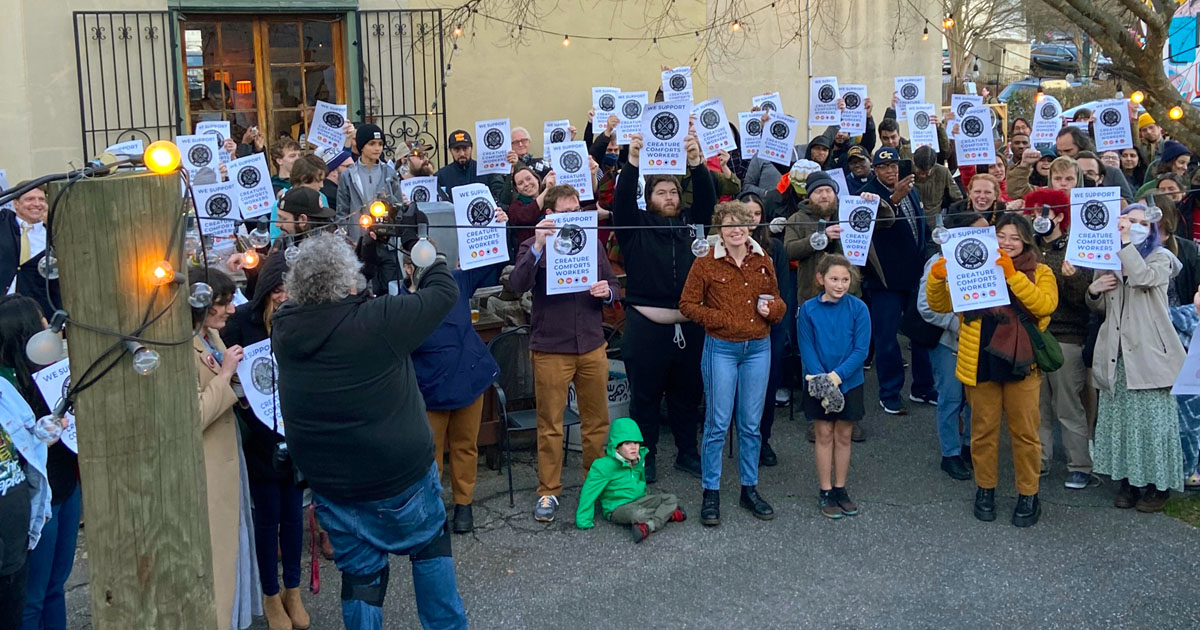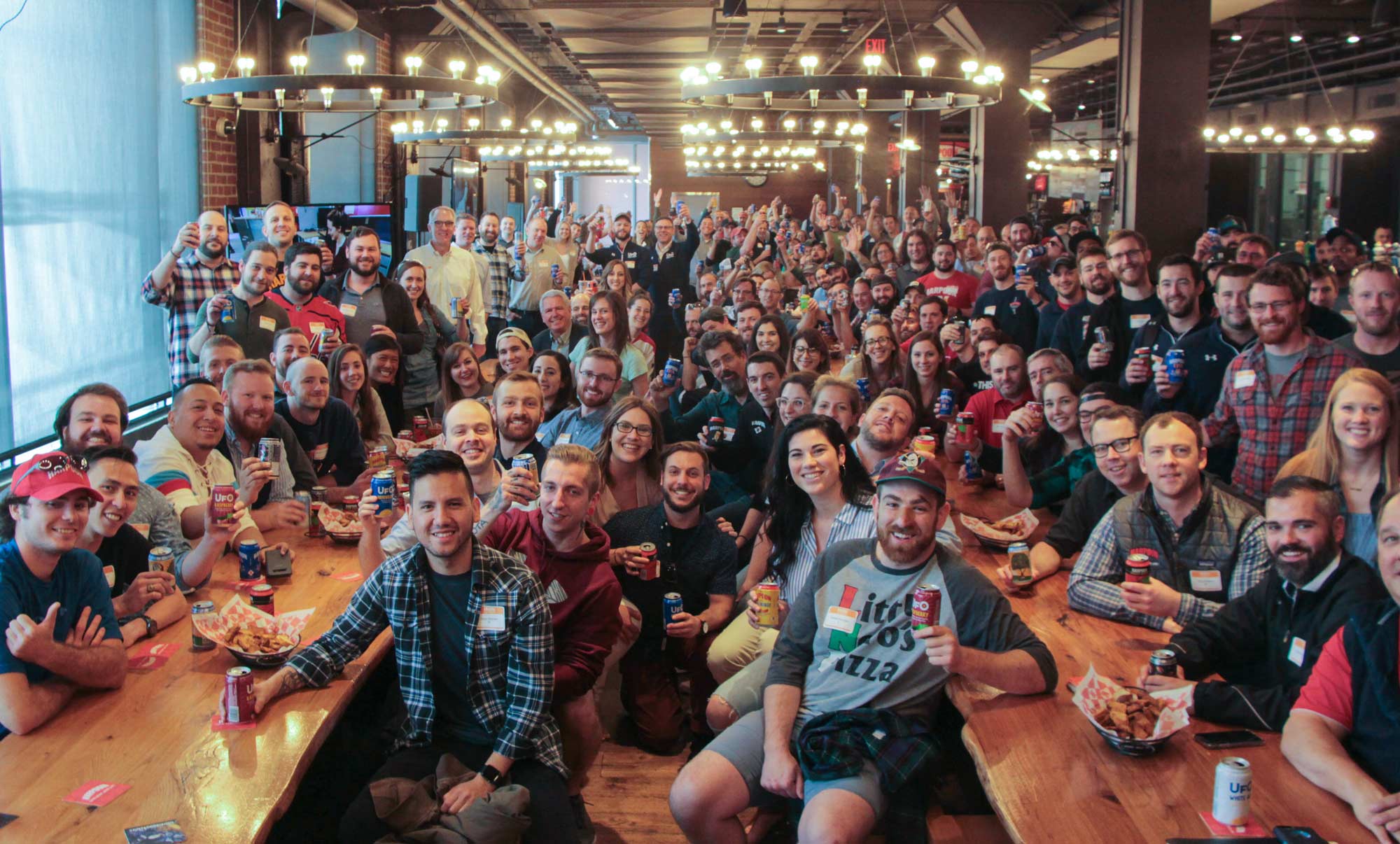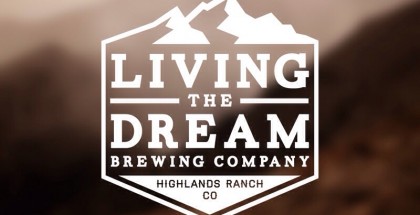You Can’t Spell Union Without U and I
On January 17th, 2023, the nearly 100 current employees of Creature Comforts Brewing in Athens, GA filed a petition with the National Labor Relations Board (NLRB) to unionize under a brand new independent labor banner — BUG or the Brewery Union of Georgia. This does not mean that Creature Comforts has officially unionized their labor force, as a formal election process amongst employees must take place to solidify the new structure and then head to the bargaining table, but BUG organizers are optimistic about the vote. The discussion about unionization began earlier last summer and progressed quickly as many employees cited feeling neglected, overburdened, and unsupported by upper management, who have been busy planning the expansion of a new Creature Comforts facility in Los Angeles. BUG also believes that unionization embraces Creature Comforts’ overarching company values such as ‘“existing to foster human connection” and “building a balanced team of authentic and professional individuals.”
This is not the first time that a craft brewery has tried to unionize and it will definitely not be the last, as the craft beer industry has built itself a reputation for low wages, few and far-between benefits, lack of advancement or continuing educational opportunities, unsupported parental leave, long hours, and sometimes unsafe working conditions. In an April 2022 survey done by Craft Beer Professionals and Craft Beer Advisory Services, 60% of respondents consider their compensation somewhat or extremely below fair, and that base pay raises, growth opportunities and increased benefits were the top three factors employees cited as critical to their future happiness at work. Combine stats like this with the rise in popularity of social media to fuel public unionization efforts by the likes of Amazon and Starbucks, owners and operators of craft breweries should prepare for potential labor organizing amongst their own staff no matter how secure they feel in their connection with their teams of “rank and file” employees.

What does it all mean?
Unionization is a complicated and commonly misunderstood process, but here are some simplified basics. It starts with employees (discreetly) discussing workplace conditions that might be unfavorable, like low wages, lack of benefits, or advancement opportunities. Many owners and operators have misconceptions that union organizations, like the IWW (Industrial Workers of the World) or the ILWU (International Longshore & Warehouse Union), push their union structures upon workers, but honestly, it usually begins with employees that are unhappy in some way. On the flip side, sometimes employees choose to unionize even if they are not unsatisfied with working conditions, choosing to form a union to protect their workplace culture and fair compensation that is currently in place. Under the National Labor Relations Act, any employees of US private sector businesses that engage in interstate commerce have the right to unionize and participate in collective bargaining. Employees must then organize themselves in order to file a petition to unionize with the National Labor Relations Board. The union will only be recognized if at least 30% of employees elect to recognize their union or if management agrees to formally recognize the union themselves. After the union is recognized, it’s time for employees and management to head to the bargaining table to agree upon working conditions.
Pros and cons
Unions have long been a part of the American labor landscape, making their debut in the 1790s, and exist to protect workers’ rights and advance their interests. Proponents of labor unions provide that unions greatly benefit employees by negotiating for better wages and benefits, demanding safer working conditions, and limiting work hours. In 2022, the Bureau of Labor Statistics reported that non-union workers had median income levels that were 85% of those workers in labor unions. In a 2021 Vinepair article about the one-year anniversary of Anchor Brewing’s labor unionization, Robert Salgado, an employee of Anchor, said “for me, it was more beneficial, because I got a pay raise…I think it helped out a lot of my coworkers too…now they actually have a little more money in their pockets. I think it helps. It’s on its way to being enough, With future contracts in the years to come, it will get to being enough. I can say [the pay increase] has made life easier, and more attainable.”
Critics of unionization argue that union contracts make it difficult to fire unproductive workers, that they increase long-term costs, and create a layer of bureaucracy that hinders communication. Unions are also not free for employees in that they usually charge annual union dues to members. Jon Hyman, a partner in the Employment & Labor Practice of Wickens Herzer Panza and the co-founder of their craft beer group program, is unapologetically anti-union, but fights for “workplace management that focuses on positive culture and positive treatment of workers.” He firmly believes that unions 1) promote and protect the lowest common denominator, 2) promote and protect the collective over the needs of the individual, 3) prioritize longevity over merit, 4) replace one business with another, 5) create an “us versus them” attitude amongst workers and the company, and 6) nothing in the employer-employee relationship is supposed to be equal.
Are unions good for craft beer?
Whether or not unionization is good for the craft brewing industry is still up for debate. As industries grow there will be growing pains. 2018 brought a record number of brewery openings. In the 2020 study Beer Serves America from the Beer Institute, the beer industry contributed over 2 million jobs and $331 billion to the US economy. Yet most brewery workers earn less than a living wage in their state of residence, especially in the craft brewing segment where jobs are typically viewed as too hip to pay competitively. The lack of opportunities for underrepresented communities and an acute problem with sexual misconduct and harassment in the craft beer industry has also caused rifts between employees and management. And while there are many craft beer organizations that have extremely content workforces, large mergers and acquisitions over the past few years have raised questions of who is actually in charge that could take those benefits away at the drop of a hat. Not to mention the cliche elephant in the room – the pandemic, which claimed more than half a million jobs and equated to more than $21 billion in lost wages according to the Beer Institute. “I probably would be out of a job right now if we didn’t have our union contract,” said Blake Dahlstrom, a brewery lab technician and one of Anchor Union’s four shop stewards in a 2021 article for Vinepair.
Unionized Beer Organizations
Surprisingly, there is quite a large list of breweries that have unionized workforces and a growing number of craft breweries that have attempted to unionize but have fallen short of success. Large union breweries include the likes of Anheuser Busch, Kirin, Labatt’s, Molson Coors, Boston Beer, Matt Brewing Company, Minhas Brewing Company, August Schell Brewing Company, and Genesee Brewing. Smaller craft breweries that have unionized include Anchor Brewing (not craft anymore), Fair State Brewing Cooperative, Headless Mumby, and Mendocino Brewing. The list of craft breweries that have unsuccessfully attempted to unionize includes Surly Brewing, Pyramid Brewing (prior to their purchase by AB), Goose Island, and Great Lakes Brewing.
For additional context, unionization should not be confused with ESOP business structures, which grant employees portions of ownership of the company in the form of stock. Employee Stock Ownership Plans are also gaining momentum in the craft beer world with companies like Harpoon, Union Craft Brewing, Odell, Alaskan Brewing, Deschutes, Rhinegeist, Left Hand Brewing, New Belgium (formerly ESOP prior to the merger with Bell’s), Barrio Brewery, and Breakside Brewing. ESOP structures have their pros and cons as well, but the general idea behind the organizational structure is that employees will apply themselves to their roles in a more enthusiastic way since they have financial skin in the game.

Looking Ahead
So are unions and ESOPs the future of craft beer? Who knows. That answer is about as clear as the crystal ball craft beer businesses used back in 2020, but one thing is certain, as the workforce and economic impact of craft brewing grows, so will the growing pains, and various labor organizational methods will start to become more commonplace. Yet whispers about unionization or alternative labor structures have not yet materialized into public discussions, leaving employees to turn to private messaging on social media, anonymous posts in industry forums, and discreet meetings amongst colleagues to explore potential solutions for unsatisfactory working conditions. And for the high profile, business-focused industry events like the BA’s annual Craft Brewers Conference, official programming about labor structures is still taboo, as those events are primarily attended by owners and top management, making employees feel intimidated and nervous about discussing workplace conditions and benefits. In an April 2022 article for Good Beer Hunting’s Sightlines, Kate Bernot spoke with Anders Bloomquist, a warehouse specialist for Fair State Brewing and organizer for the union Unite Here Local 17, where he stated that “he and other organizers also suspect that workers who do attend CBC may feel constrained by their bosses’ presence there, even if they were interested in exploring what unionization would mean for them and the businesses at which they work. It’s only been within the last couple of years that there’s been any kind of concerted effort from labor unions to organize workers within the craft brewing industry.” Only time will tell if this changes at upcoming conferences and business events, but for now, most employees are regulated to discussing labor organization at length behind closed doors.








Submit a Comment